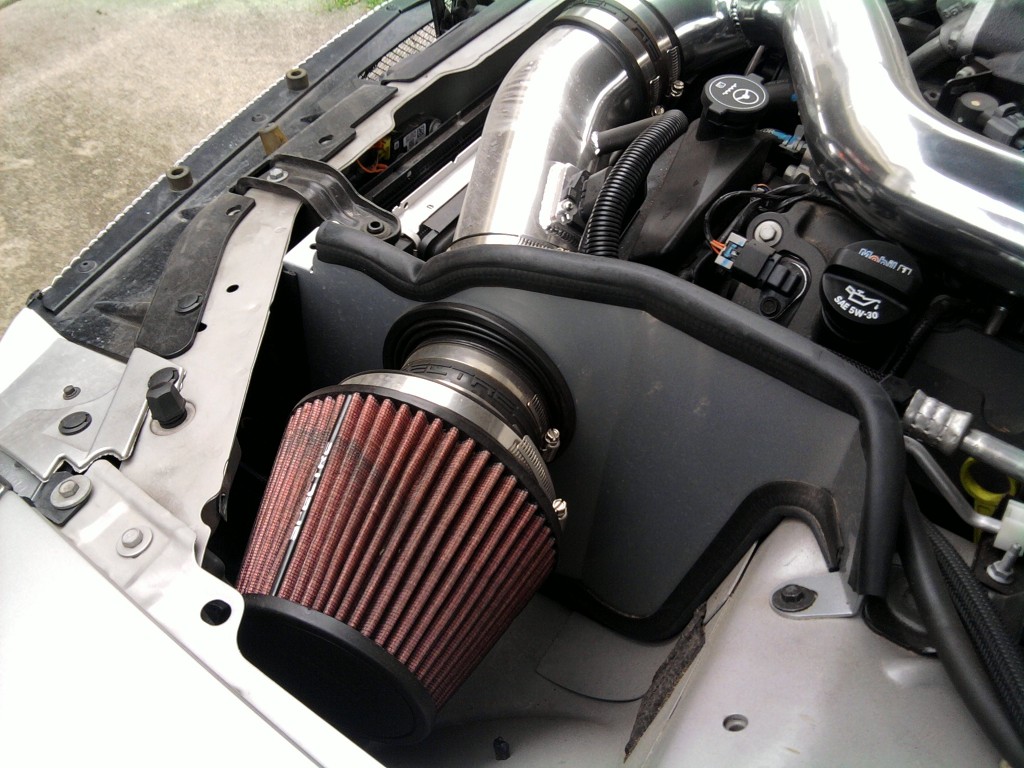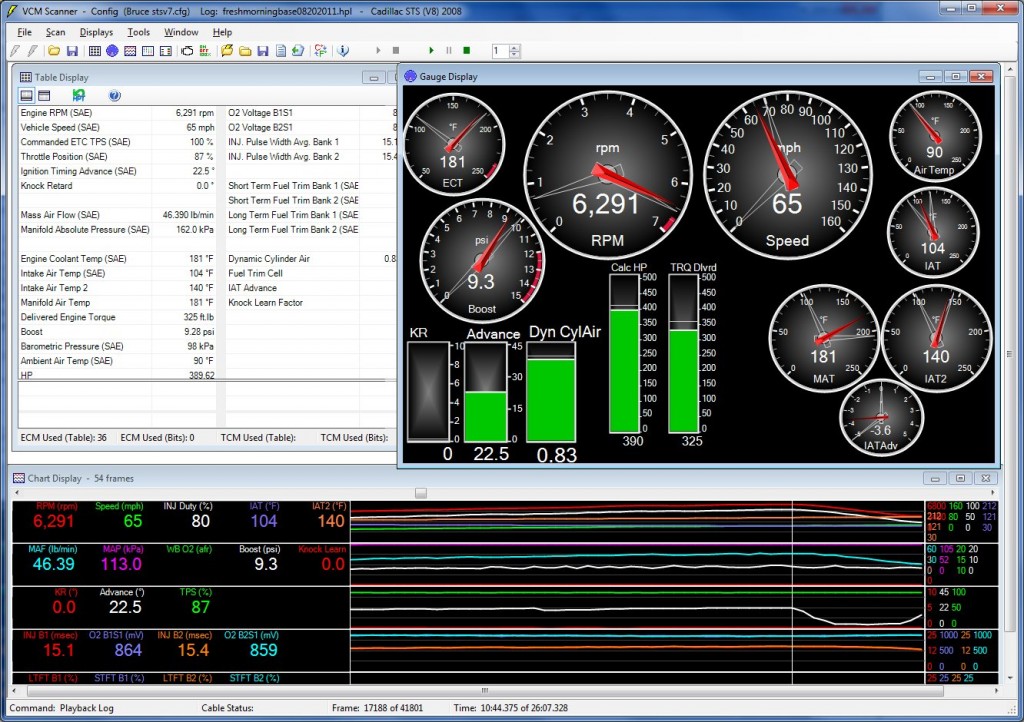I like the Spectre intake for the Cadillac STS-V. However, when we put the intake on we discarded the factory engine covers along the front and side. The Spectre intake includes a barrier to direct air away from the intake filter, but it is not closed at the top.

Cadillac STS-V Spectre Intake filter and air dam
I was considering building an insulated cover or box, but it is desirable to me to re-use the factory trim pieces. Also, there are some functional air blocks built into the trim that I want to recover use of — example the foam air dam below the center front piece, and at the rear of the driver side piece.

Foam on the under side of front middle trim acts to keep air in the radiator flow
The factory piece that would fit over the driver side won’t fit with the Spectre intake in place, so I trimmed the side piece, and the front center piece, to allow them to fit with the Spectre Intake. I need to get some rubber gasket material to close the gaps, and smooth the edges, but now all the pieces fit.

Trim pieces trimmed and in place
Even though the V was hot I did a test and data run:

Max calculated power for the test run 415 hp in 2nd gear at 6346 RPM for comparative purposes; max torque 377 lb ft at 3324 RPM.
Unfortunately I only have a heat-soaked mid-day comparison run for today. I attended Church this morning, then worked on trimming pieces, then did a test run.
|
Baseline from August 2011 |
|
|
|
|
|
MPH |
(Temps in Deg Fahrenheit) |
|
| Deltas |
Item |
0 |
30 |
45 |
60 |
Deltas |
|
Ambient |
90 |
90 |
90 |
90 |
0 |
| 23 |
IAT1 |
113 |
117 |
113 |
106 |
-7 |
| 5 |
IAT2 |
118 |
120 |
127 |
135 |
17 |
| 2 |
MAT |
120 |
121 |
136 |
169 |
49 |
|
|
|
|
|
|
|
|
Trimmed Trim Mar 2012 |
|
75F |
|
| Deltas |
|
MPH |
(Temps in Deg Fahrenheit) |
|
|
Item |
0 |
30 |
45 |
60 |
Deltas |
|
Ambient |
75 |
75 |
75 |
75 |
0 |
| 16 |
IAT1 |
91 |
93 |
93 |
91 |
0 |
| 33 |
IAT2 |
124 |
122 |
129 |
136 |
12 |
| -2 |
MAT |
122 |
121 |
134 |
163 |
41 |
There is a lot to read and try to analyze here, but let’s piece it together.
First, today is cooler than back in August, 75F instead of 90F. However, my STS-V is heat-soaked today and wasn’t back in August.
IAT1 is 16F above Ambient now and was 23F back in August. That is what the trim is supposed to help with, so good. In August the 0-60 run itself cooled the IAT1, while it did not today.
IAT2 was only 2F above IAT1 in August (morning run, not heat soaked); today it was 33F above (heat-soaked). In August the IAT2 gained 17F during the 0-60 run; today 12F.
MAT in August gained 49F on the run; today 41F.
I am cautiously considering replacement of the trim beneficial — did result in lower delta temps. I would like to have a non-heat-soaked current run to compare for apples to apples however. There are still some gaps in the trim fit that will benefit from some gasket material along the edges.








